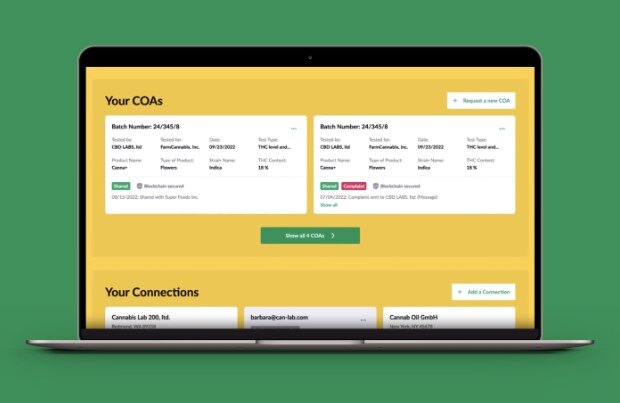7 Ways to Achieve Faster Time to Market

A few years ago, Clayton Christensen dropped a real bombshell on the business world, saying that – out of 30,000 apps launched each year – 95% fail.
Does that mean you should forget about that hot idea of yours and open a fresh produce store or another ‘safe’ business instead?
You don’t necessarily have to (unless you really want to). One of the success factors is how quickly you can bring your app to the market. It doesn’t have to be perfect or complex – the key is to start collecting feedback from customers and iterate in line with what the market wants.
In this post, I’d like to zero in on time to market and tell you how you can speed it up.
What is the time to market (TTM)?
Time to market (TTM) is all about how long it takes for a product to go from an idea to being launched. It involves several stages.
First, it starts with the concept or idea. Next, it moves through design, development, and testing. Finally, the product is launched and made available to customers.
Why is TTM important? In today's reality, being first can make a huge difference. A shorter time to market means you can meet customer demands quickly and react faster to market changes. It helps businesses capture market share before competitors do.
Why is reducing time to market crucial?
There are a few main reasons:
- You get a competitive advantage: cutting the time to launch your solution means you have fewer companies to fight with for user attention. Of course, it’s not about ‘getting there early’ only. It’s about ‘getting there early’, with a high-quality product.
- You see money come in sooner: This one’s pretty self-explanatory. The sooner you launch your product, the earlier you’ll see ROI and build a budget for further investments in your solution.
- You secure early adopters: This user group is largely built from tech enthusiasts. And, since they love to try out new solutions, they’ll act as a great source of product feedback. This means you can make your product even better before the market becomes saturated.
- You can build an industry leader image: If there are few solutions similar to yours, those who get to the market later will try to outpace, or even emulate you. And I truly believe that seeing a copycat or imposter of your solution is an indicator of success.
What affects time to market?
A few factors impact time to market, some you’ll be able to control, others you won’t.
- Product complexity: The more complex your product is, the longer it will take to develop it. Think: more new features, processes, and potential problems – it’s as simple (or as complicated) as this.
- Availability of resources: By resources I mean talent, funding and technology. The more resources you have, the faster you’ll be able to launch the product – in theory.
- Regulations: If you operate in a highly regulated market like healthcare or finance, then getting all the necessary permissions and meeting regulatory standards can take time.
How long does it take to build a digital product?
They say you’re not supposed to answer a question with a question, but this one calls for an exception. How innovative and tech-savvy is the team that's going to build the product?
I agree with McKinsey that the pace at which you can deliver high-quality digital products is heavily influenced by these two factors. They call this jointly “world-class digital capabilities” and divide companies into three groups.
Those with ‘world-class’ capabilities can deliver a product in 8-12 weeks, while ‘traditional’ companies will take 1-2 years.
Yes, years – not weeks or months.
Of course, this timeline depends on how complex the solution is. Doing a revamp of an existing platform or building a simple app will take shorter than, say, creating a BI platform from scratch. Still, the disproportion will always be there, and ‘world-class’ teams will always win through faster time to market.

It makes sense if we realize that the best product development teams can push up to 50 releases per day, while so-called ‘leading’ brands can only get to 1-4 per month, and laggards to 1-4 per year.
7 ways to reduce time to market
Alright, enough theory; here are the strategies I recommend to our clients to launch products faster.
Validate your product with fast MVP delivery
By definition, a Minimum Viable Product must be fast – but it can’t be rushed either. Believe me that it’s quite common for companies to get stuck on MVPs due to wrong market assumptions or over-engineering.
To avoid this, you should work with the right team – not only one with hard skills like coding, but also those who understand business and market demands. For example, our MVP consultants at Netguru run market research, help decide on the scope of features for the MVP, and then validate the product idea with insights from real users. By the end, you know which direction to expand your product in in later iterations to get a higher market share.
Speed up the development process with AI
Anyone who turns a blind eye to AI can also forget about outpacing competitors with their product. These tools are incredibly useful in the right hands and can help speed up both backend and frontend development.
For example, at Netguru, we use GitHub Copilot and design-to-code platform Locofy to speed up time to market. To give you a peek, here are some of the things they help with:
- Suggest lines of code or complete functions. Developers who use Copilot are 55% faster in their work than those who don’t. This means your devs can focus on problem-solving and higher-quality work.
- Improve code quality and catch bugs. AI can analyze your code and suggest improvements, lowering the number of errors.
- Optimize MVP design. This is one of Locofy’s benefits. At Netguru, we use it to fine-tune Figma-based designs and make sure they’re ready for handover to developers.
- Generate prototypes from code, using real code from your product. You don’t need to worry about discrepancies between design and code anymore.
Accelerate development with cross-platform solutions
If you want to launch your product on different platforms, either now or possibly sometime in the future, don’t settle on native app development. Go with a cross-platform solution instead.
In short, you only build one codebase and use it to run your app on multiple operating systems. This means you don’t need a separate iOS and Android team. Going with this approach will help you speed up time to market, since you’re significantly cutting the time and complexity of the project.
Build smarter with low-code/no-code
Years ago, writing code was the only option for building digital products. But luckily, times have changed, and now we can use low-code or no-code solutions to develop apps. I can confidently say that these tech marvels have revolutionized software development.
These platforms allow for rapid prototyping and iteration, meaning that new products can be launched really fast. And by ‘fast’ I mean the development time can be cut by over 50%.
Take Bubble, for example. This no-code tool enables users to create mobile and web applications using a drag-and-drop interface with minimal coding. Our test with Bubble involvedbuilding a speech-to-text app in just 25 minutes.This makes Bubble an intriguing solution for developing MVPs.
And the best part? They’re easy to use; less technical staff will be able to wrap their heads around them, which will democratize the product development process and most probably make it more creative.
With low-code platforms, the pressure to release new products faster will be even higher. So, if you still haven’t looked into low-code/no-code, you should probably do so now.
Put in place effective project management
With the rise of AI, new products pop up like mushrooms. If you want to stand a chance in this race, you need to put an effective project management process in place. There are many approaches you can take, but at Netguru we’re huge advocates for Agile.
It allows us to deliver on product requirements iteratively and incrementally. Users’ needs change and evolve with time. Short development cycles allow us to quickly respond to customer feedback. As a result, you can quickly launch a product that your clients will be satisfied with.
Ensure streamlined workflows
Reid Hoffman once said, “if you’re not embarrassed by the first version of your product, you’ve launched too late”. Speed of development is an important success factor, which can give you a competitive advantage. But to achieve speed, you need to optimize your workflows. Your product team must know what they need to deliver and when – and this calls for detailed documentation.
It should include timelines, tasks, resources, potential problems, and bottlenecks. Make sure it’s accessible to everyone. Transparency promotes higher engagement and invites team members to come up with improvements. Following Agile is the best way to streamline your workflows.
Leverage team extension
Finding top-notch specialists to work with is always a challenge. Is bringing full-time talent on board the only option? No, it’s not, and to be honest, it’s not the best one either. You could consider team extension instead.
It’s a type of work arrangement, where you can swiftly add necessary talent to a project without any delays or interruptions. This could be multiple engineering pros on a temp basis or remote setting.
Not only is this approach cost-effective, but it also fuels growth. No wonder the team extension market is set to reach $82 billion by 2025.
Case studies – brands that accelerated time to market
Want to know how other businesses have got their products into consumers’ hands quicker? Here are some interesting examples.
Żabka – dobra paczka, a food waste solution
Ecommerce time to market is especially important. Realizing this, Żabka, a major convenience store chain in Central and Eastern Europe, came to Netguru with a challenge. They wanted to fight food waste by building a smart new feature in their app. The idea was to let customers buy discounted items nearing their expiration date.

Żabka demonstrates the accelerate time to market meaning for businesses
Our team approached the project by developing a minimum viable product (MVP) in just six weeks, all the while ensuring that the new feature wouldn’t affect app performance. We did this by betting on ongoing experimentation over following a rigid, pre-defined plan. Among others, our team turned to quick, continuous user and market testing and worked in short iteration cycles.
The project was completed under budget and tested in 55 stores, with expansion plans. All stakeholders gave the initiative a perfect net promoter score (NPS) of 10.
Blockchain-powered platform for MilliporeSigma
MilliporeSigma partnered with Netguru to build a blockchain-powered web platform to improve the transparency and security of their supply chain. We were working on a closed-ended deadline, with the entire product development spanning four months from build-to-production.
Our team approached the project by designing and developing a user-friendly MVP, ensuring high data integrity. In the first stage, we helped MiliporeSigma trim down the number of features and created an action plan with initial designs. We then implemented the MVP and added new features ongoingly, based on feedback.

Netguru helped MiliporeSigma accelerate time to market for their blockchain-based platform
FairMoney – Scaling mobile banking across Africa
FairMoney, Africa’s number one neobank, partnered with us to scale their mobile engineering team and handle their explosive growth of 1 million users in just six months. We optimized critical app components, including lending, banking, and KYC features, ensuring compliance with regulatory requirements.
Through staff augmentation, we helped FairMoney reduce their time-to-market by 30%, improve app stability, and support expansion across multiple African regions.

Merck – Chemical identification with AI R&D assistant
Merck, a leading life science company, partnered with Netguru to slash their chemical identification time from six months to six hours. They needed an AI R&D Assistant and gave us five weeks to deliver a proof of concept (POC).
Our team quickly developed the POC, creating an interface for uploading scientific PDFs. The AI extracted chemical compounds, retrieved detailed information using LangChain and AzureOpenAI, and checked Merck’s Catalog DB for already sold chemicals. The project was completed under budget, hosted on Merck’s AWS infrastructure, and reduced the process time to approximately six hours.
Vinted GO – carrier integrations
As Vinted rolled outits marketplace across Europe, the team needed to add new shipping carriers quickly to support each country launch. Vinted GO partnered with Netguru to handle parts of this integration work so they could move faster without expanding their internal engineering team.
Netguru supported the development of new carrier integrations using Vinted GO’s adapter architecture and helped maintain existing ones. This included implementing new delivery options, managing label workflows, and ensuring each integration met the operational requirements for upcoming market releases.
This additional capacity helped Vinted GO meet tight launch timelines in several European markets while keeping internal teams focused on core platform development.

Advantages and Challenges of a faster time to market
The speed at which you bring your product to market can significantly impact your business's success. While there are numerous advantages to launching products quickly, there are also several challenges to consider. Below is a detailed overview of the key advantages and challenges of a faster time to market.
| Advantages | Challenges |
| Seizing market chances: Quick launches capture market trends, attracting customers before competitors. | Quality issues: Rushed launches can compromise product quality. |
| Increasing sales and market share: Faster launch leads to early profits and larger market share. | Missing features: Important features might be left out to meet deadlines. |
| Getting quick feedback: Early market entry allows quick user feedback for product refinement. | Stressed workers: Increased pressure can strain relationships and morale. |
| Boosting innovation: Encourages innovation and quick response to market changes. | Technical debt: Cutting corners leads to issues needing fixes later. |
| Strengthening brand image: Enhances brand reputation as dynamic and innovative. | Unhappy customers: Incomplete products lead to customer dissatisfaction. |
| Staying relevant: Reduces risk of product becoming outdated, keeping technology relevant. | Regulatory risks: Rushed launches may overlook compliance requirements. |
| Running more efficiently: Streamlines processes for efficient operations and reduced costs. | Speed over innovation: Focus on speed may hurt creativity and long-term competitiveness. |
| Boosting team spirit: Boosts team morale with quick, successful launches. | Market misalignment: Skipping research can result in a product that doesn't quite fit customer needs. |
Better done than perfect – focus on speed and iterate later
Yes, competition is crazy in most industries, and an idea for a business won’t wait forever if you don’t validate it quickly. If you don’t do it, I assure you, someone else will.
The good news is you now have much more technological abilities than in the past to bring an innovative product to the market faster. Whether it’s rapid MVPs, AI-powered engineering, cross-platform or no-code – all you have to do is apply best practices and leverage digital acceleration.



